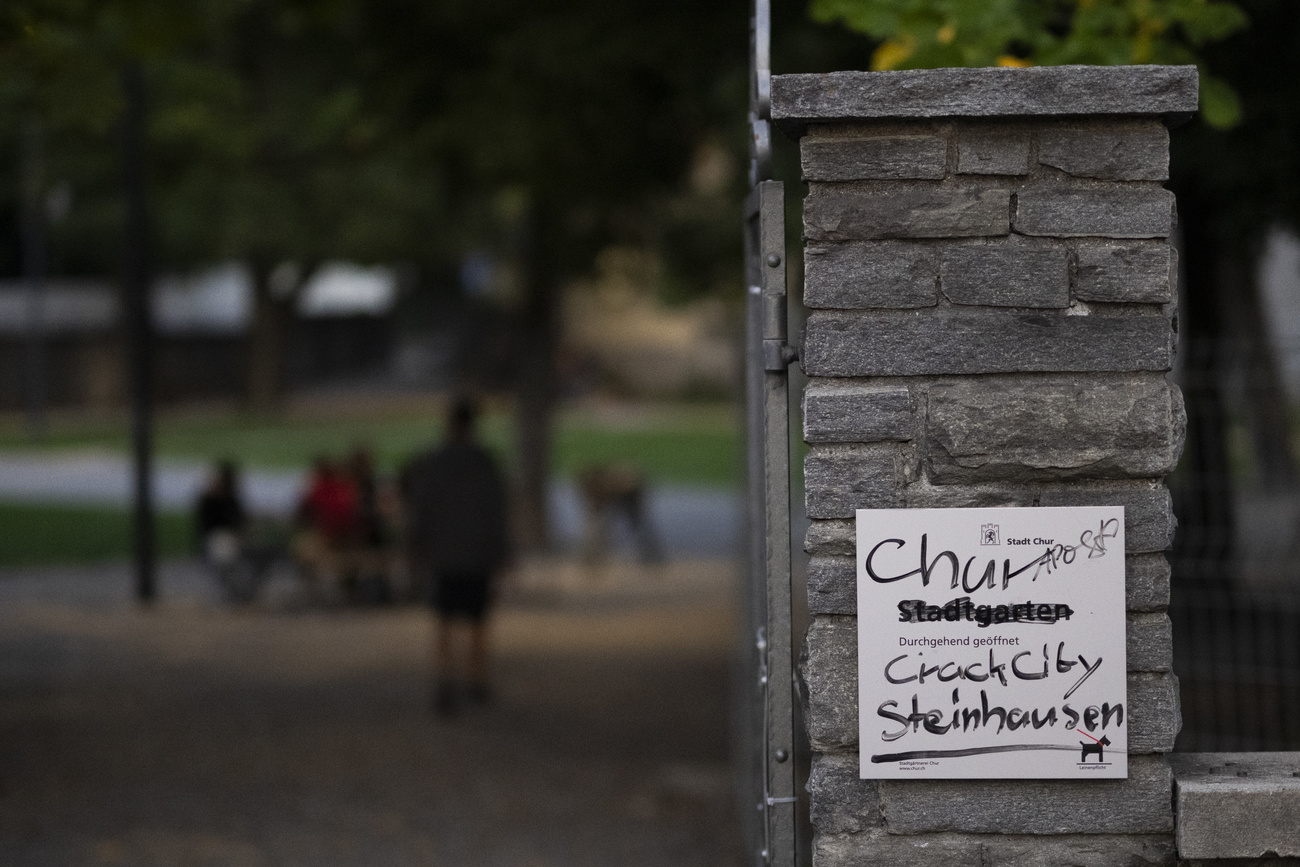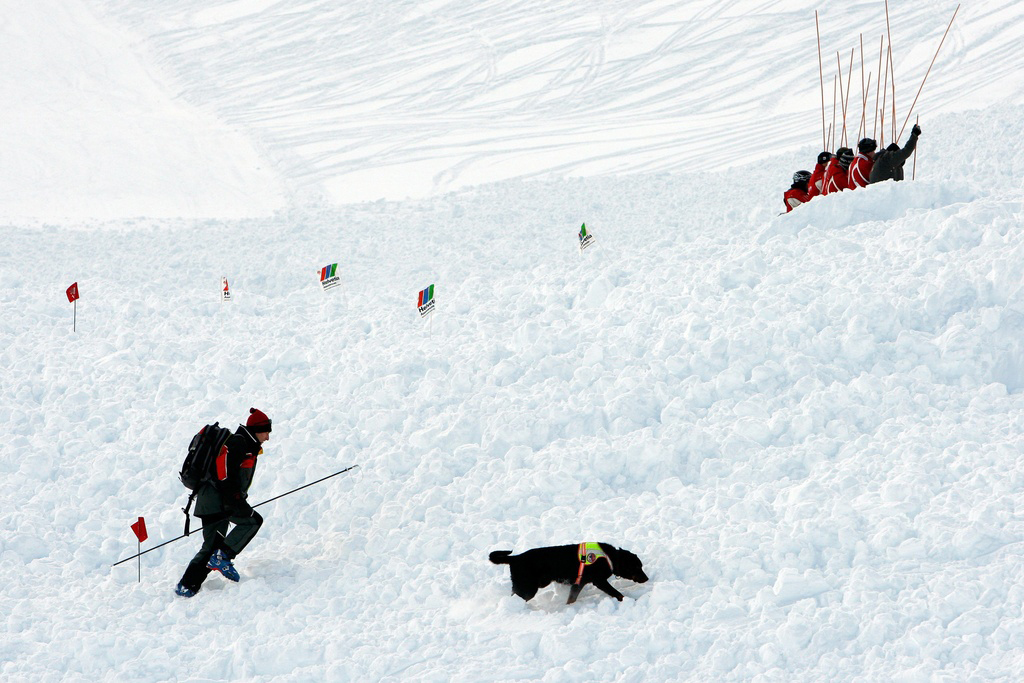Avalanche tragedy strikes rescuers hard

The avalanche tragedy that killed seven people in the Bernese Oberland on Sunday is a harsh reminder that rescuers put their lives at risk to save others.
For Bruno Jelk, head of the rescue service of Zermatt in canton Valais, the tragedy is also a reminder of the respect that people should have for the Alps.
The worst such accident since 1999 involved two avalanches that came down shortly after each other in the Diemtig Valley. Among those killed was a doctor of the Swiss Air Rescue Service (Rega).
It’s the first time in the history of the organisation, founded in 1952, that one of its rescuers has died in an avalanche rescue operation.
swissinfo.ch: What went through your mind when you heard about the death of a Rega colleague in the Diemtig valley?
Bruno Jelk: For us, it’s a tragic event when a rescuer dies on a mission; it’s the worst thing that can happen. It’s the second time this winter that such a tragedy has taken place. Four rescuers have already died in South Tyrol in Italy.
swissinfo.ch: Doesn’t that make you afraid about future operations?
B.J.: You cannot allow yourself to be afraid because that would be totally the wrong approach. But you must show great respect.
swissinfo.ch: For you as a rescuer, are there limits which would make an operation impossible?
B.J.: Yes, there are. You shouldn’t [for example] cause a second accident after a first. It has happened several times, even in summer, when we have been on foot, that we have had to call the operation off because the risk was too high.
You should always respond to a call for help but you have to have the courage to abandon the mission [if necessary] because there comes a time even for us when there are limits that should not be exceeded.
These are mainly weather and visibility conditions. Last year, six climbers went missing on a glacier. We set off at night but then had to turn back because the risk was too great.
swissinfo.ch: What goes through your mind then, because that’s almost a death penalty for these people who are in an emergency situation?
B.J.: Fortunately those climbers survived. The important thing is to be able to say that you did the best you could and that it was not possible to do more.
swissinfo.ch: Of course there are emergency operations in which people are themselves to blame for ignoring regulations, piste indications and safety instructions. What kind of motivation do you have to have to put your own life at risk to deal with people who are irresponsible?
B.J.: We are rescuers, not judges. It’s our job to help people who are in difficulties. Whether they made an error [of judgement] is really not our problem. But we have to make sure that our own safety is assured.
If someone falls over a cliff and the chances of survival are really next to nothing we reduce our operation. But if that person could survive, whether or not they made a mistake, we have to try to help. Resenting people who are irresponsible does not help us.
swissinfo.ch: Do people take more risks when they have location devices or mobile telephones with them?
B.J.: There are two angles to this. The great advantage of these devices is that they have enabled many people to be rescued. A lot of them would be dead if they had not had these things with them. For example, 80 per cent of alarm calls come from mobile phones. We know then exactly what and where something has happened.
The disadvantage is that people do indeed take more risks. In summer in particular people go out without really looking at the weather situation. And when they have a problem, they simply telephone us on their mobile phones.
There we have a dilemma. We have to try to calculate the dangers there are for these people. Have they had an accident or are they, as often is the case, simply stuck? This kind of calculation, which is also for our own security, tends to delay any rescue.
swissinfo.ch: Was there ever a “worst case” for you when you came to your limits?
B.J.: I’ve experienced that several times and often in what were considered “normal” rescue operations. Once I was involved in a rock slide and then ended up in hospital. On another occasion I wanted to use a carabiner to attach myself to a cable car but it broke. I managed to hold on to the door handle of the cable car, otherwise I would have fallen 130 metres.
Such things mostly happen unexpectedly. There are risks you cannot calculate in other professions and people have to live with them too.
swissinfo.ch: Who pays for the rescue costs when people are off the marked pistes or routes?
B.J.: When someone has an accident or causes one, they get the bill and have to then negotiate with their insurance company.
But when people through their misconduct endanger themselves or others is an issue that’s now under discussion. For example, three off-piste skiers have been reported to the authorities in Valais for causing an avalanche. Two skiers who were on the marked pistes were caught in the snow, and one had to be rescued after being injured.
I cannot tell you how a judge would decide in such cases. But it’s certainly something that bears thinking about.
swissinfo.ch: Who is liable in the tragic death of the Rega doctor?
B.J.: That of course is just fate. The Rega doctor did his duty and then along came a second avalanche. I cannot really say any more. Here it is more a matter of fate than liability.
Jean-Michel Berthoud, swissinfo.ch (Translated from German by Robert Brookes)
In Switzerland off-piste skiing is not illegal. Ski runs and off-piste zones are both part of the public domain. But reckless acts like ignoring avalanche warning signs and then setting off an avalanche that hits a marked run can lead to a conviction, even if there are no victims.
Freeriders responsible for avalanche accidents have been given fines and asked to pay for damages and to meet the cost of the rescue operation – often tens of thousands of Swiss francs. Irresponsible skiers have also had their ski passes taken away and been put on resort blacklists.
According to the Swiss Federal Institute for Snow and Avalanche Research, about 25 people die on average from avalanches. Last year there were 28 deaths; the year before there were 11.
In the last 15 years, the institute has noted that the trend is downwards, thanks in part to better equipment.

In compliance with the JTI standards
More: SWI swissinfo.ch certified by the Journalism Trust Initiative













You can find an overview of ongoing debates with our journalists here . Please join us!
If you want to start a conversation about a topic raised in this article or want to report factual errors, email us at english@swissinfo.ch.